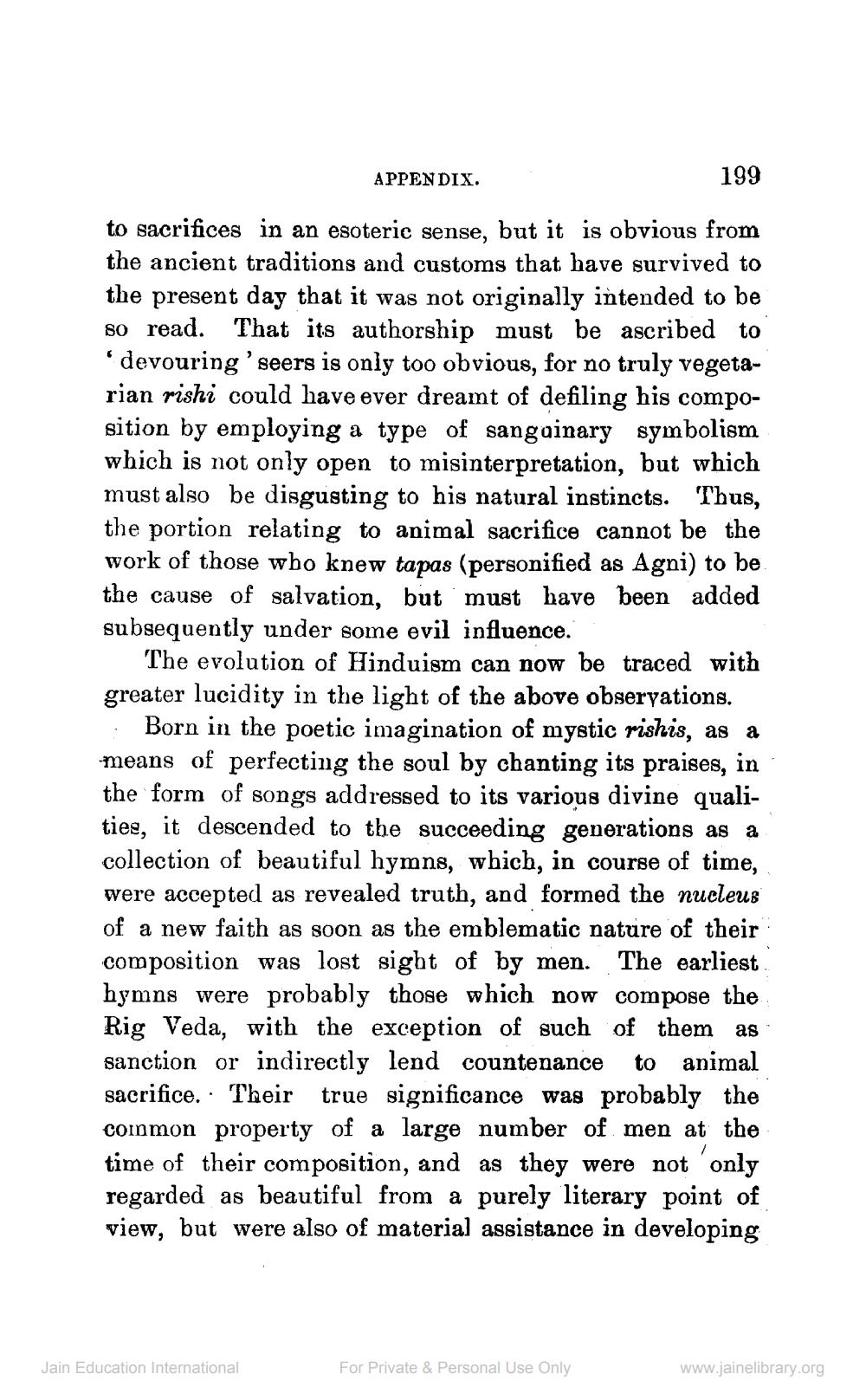________________
199
to sacrifices in an esoteric sense, but it is obvious from the ancient traditions and customs that have survived to the present day that it was not originally intended to be so read. That its authorship must be ascribed to 'devouring' seers is only too obvious, for no truly vegetarian rishi could have ever dreamt of defiling his composition by employing a type of sanguinary symbolism which is not only open to misinterpretation, but which must also be disgusting to his natural instincts. Thus, the portion relating to animal sacrifice cannot be the work of those who knew tapas (personified as Agni) to be the cause of salvation, but must have been added subsequently under some evil influence.
The evolution of Hinduism can now be traced with greater lucidity in the light of the above observations.
Born in the poetic imagination of mystic rishis, as a means of perfecting the soul by chanting its praises, in the form of songs addressed to its various divine qualities, it descended to the succeeding generations as a collection of beautiful hymns, which, in course of time, were accepted as revealed truth, and formed the nucleus of a new faith as soon as the emblematic nature of their composition was lost sight of by men. The earliest hymns were probably those which now compose the Rig Veda, with the exception of such of them as sanction or indirectly lend countenance to animal sacrifice. Their true significance was probably the common property of a large number of men at the time of their composition, and as they were not only regarded as beautiful from a purely literary point of view, but were also of material assistance in developing
/
Jain Education International
APPENDIX.
For Private & Personal Use Only
www.jainelibrary.org




